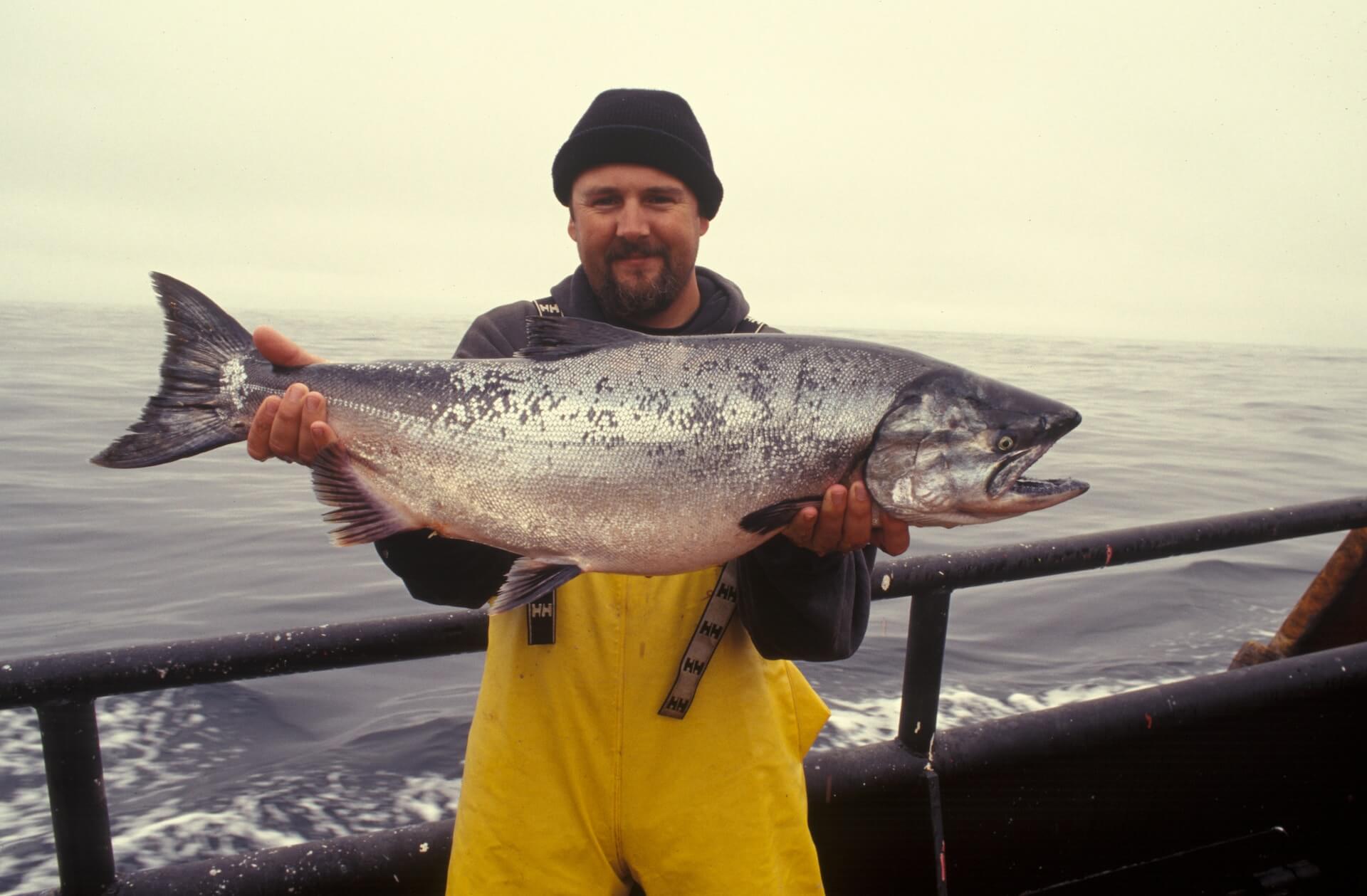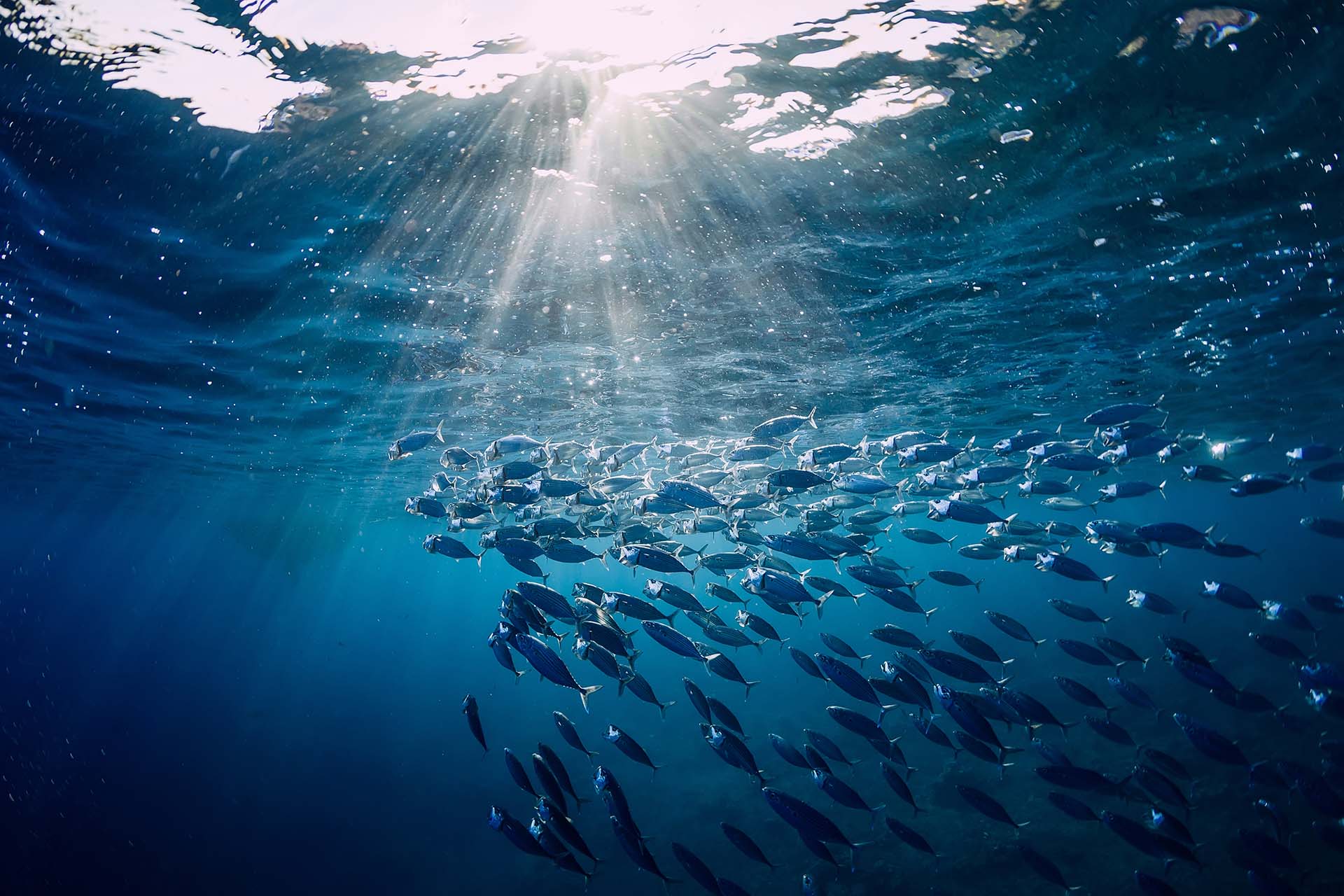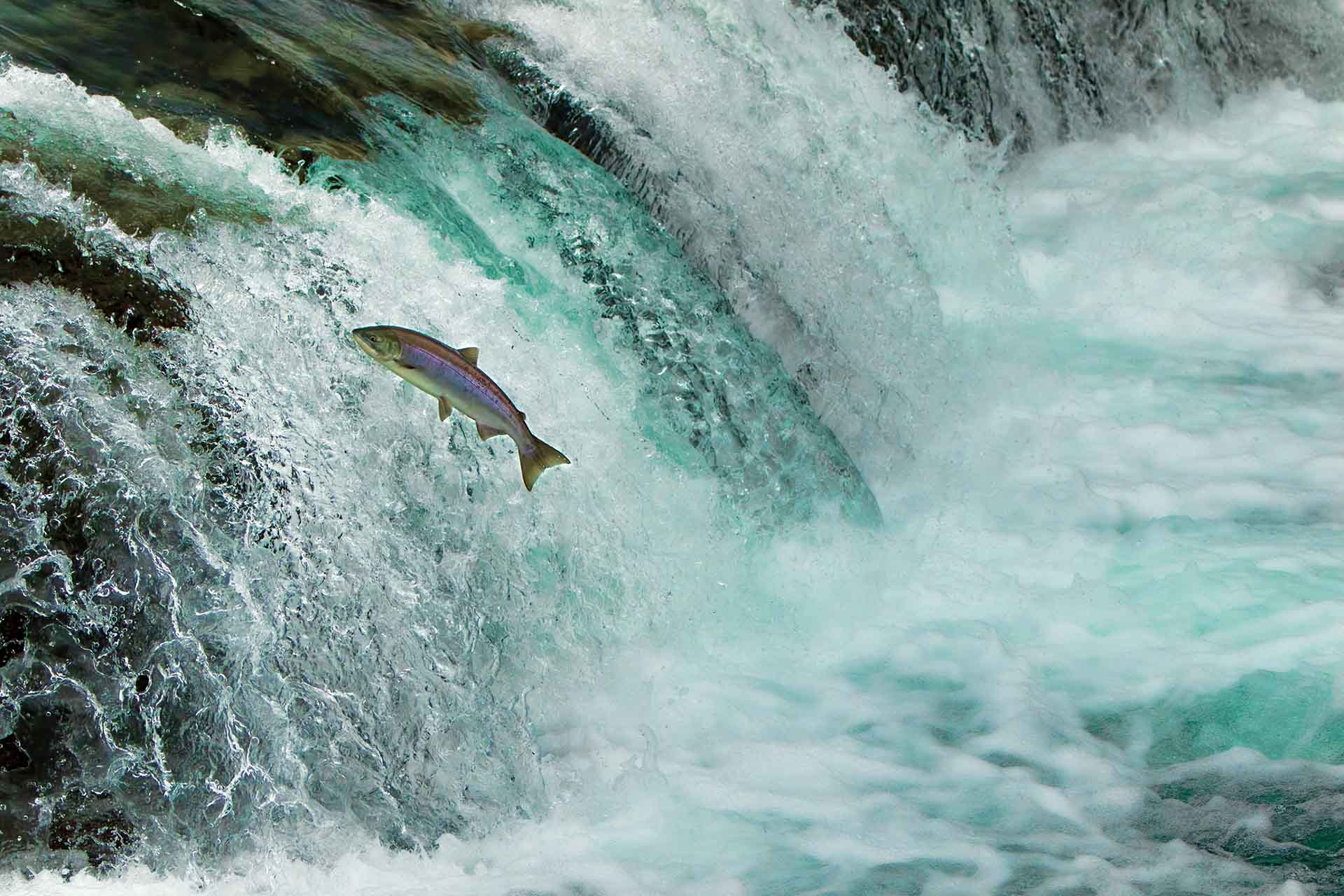When it comes to underwater heavyweights, the debate often lands on salmon vs. tuna. Both are fan favorites on the dinner table, but how much do we know about these fishy superstars outside the kitchen? Sure, we might prefer one over the other when it’s grilled or sashimi-style, but what about their lives beneath the waves? Let’s dive deeper into what makes each of them unique.
These species have distinctive physical features, with tunas being much larger. They have varied habitats and seasonal behaviors that are a huge factor when casting your line in search of either. While both are culinary favorites with unique nutritional profiles, they also present environmental considerations, from farming impacts to overfishing concerns.
A Comparison of Their Physical Features
Before we dive into their preferred habitats and seasonal patterns, it’s essential to know who you’re reeling in. Recognizing the distinct physical features of both of these common fish species is pretty easy, as they sport vastly different looks. So, let’s pull back the scales and see what sets them apart.
Exploring the Northern Beauty
Salmon is actually a common name for several fish species. This ray-finned fish from the family of Salmonidae is closely related to species such as trout, char, grayling, and others. Recognizable by its sleek, torpedo-shaped body, this creature gleams with silvery shades along the belly, transitioning to deep blues or greens on the back.
The standout feature of this fish is definitely the pronounced dorsal fin. Depending on the exact species, some even flaunt vibrant pink, red, or orange hues. And those tails? They’re the secret behind their incredible aquatic acrobatics.
Here are some well-known species from this family:
- Chinook,
- Coho,
- Chum,
- Pink salmon,
- Sockeye.
Delving Into the Ocean’s Speedster
Built like a high-performance machine, tuna belongs to Thunnini, a group of fish from the Scombridae family. This saltwater species showcases a dark blue top, blending into silvery-white underneath.
The sickle-shaped pectoral and dorsal fins are nature’s design for aerodynamic perfection, propelling it at breakneck speeds. And should you ever get close enough, its large, intense eyes tell tales of deep-sea adventures.
Here are some well-known fish that are part of this family:
- Pacific bluefin,
- Yellowfin,
- Atlantic bluefin,
- Skipjack,
- Albacore.
Which One of These Marine Wonders is Bigger?
Typically, tunas can grow much larger than their northern competitors. Some specimens have been known to reach staggering weights, such as 1,500 pounds, dwarfing the other species, which can be 135 pounds at best. Obviously, the exact measurements depend on the specific species, but it’s pretty safe to say that the ocean’s speedster takes the top spot when it comes to size.

Salmon vs. Tuna – Preferred Habitats and Distribution
While both species reign supreme in the deep blue, there’s a stark difference in their living preferences. Salmon can be found in the flow of both saltwater and freshwater environments, making a dynamic transition between the two. And the other is purely a lover of salty depths, never venturing into rivers and lakes.
Where Is Salmon Found?
These aquatic creatures are euryhaline, which means they possess the unique ability to thrive in diverse salinity levels. While originally from the North Atlantic and North Pacific tributaries, they predominantly inhabit the northern shores of both these oceans. Over time, various species have been introduced and have adapted to new habitats like North America’s Great Lakes, South America, and New Zealand’s South Island.
Here’s an overview of the preferred habitats for specific species:
| Species | Habitat |
|---|---|
| Chinook | Coasts of the Pacific Ocean, as well as large rivers and estuaries |
| Coho | Coasts of the Pacific Ocean and large freshwater lakes |
| Chum | Coasts of the Pacific Ocean, as well as rivers and streams |
| Pink | Coasts of the Pacific Ocean, with the shortest freshwater residency |
| Sockeye | Coasts of the Pacific Ocean, as well as freshwater lakes and rivers |
Where Is Tuna Found?
As mentioned, these oceanic travelers stick to the saltwater environments. However, they journey extensively across global seas, thriving in regions ranging from tropical and temperate zones to select cooler areas. Among them, the blackfin and longtail varieties are relatively limited when it comes to distribution, but other species can be found in a vast array of marine environments.
Here are the preferred habitats of some common species:
| Species | Habitat |
|---|---|
| Pacific Bluefin | Primarily the North Pacific Ocean, from East Asia to the West Coast |
| Yellowfin | Tropical and subtropical oceans worldwide |
| Atlantic Bluefin | North Atlantic Ocean and adjacent seas, including the Mediterranean |
| Skipjack | Tropical and subtropical water of all oceans |
| Albacore | Found in both the Atlantic and Pacific Oceans, in temperate waters |
It’s clear that these two marine marvels exhibit a wide distribution across global waters. While the long-distance traveling of tuna might get them further in some instances, both species showcase the rich diversity of our oceans. But these fish aren’t bound by location – their behaviors change with the seasons. So, let’s dive into the migratory dances of both species and understand them a little better.

A Comparison of Seasonal Patterns and Temperature Preferences
When it comes to the temperature sweet spots for our northern beauty, the range of 40°F (4.4°C) to 50°F (10°C) is where they truly thrive. Any significant warmth beyond this and the water becomes physiologically unsuitable for them.
On the flip side, its larger competitor is most active in temperatures between 70°F (21.1°C) and 90°F (32.2°C), depending on the exact species. For example, the biggest creatures in their family have a penchant for slightly chillier waters.
The Migration Cycle of Salmon
Typically, these fish are anadromous, which means that their switch from freshwater to saltwater is essential. Their journey starts in the gravel beds of gentle freshwater streams, where they hatch. As they grow, they make their way to the vastness of the ocean, adapting to a marine lifestyle. When the time comes, they undertake the pilgrimage back to their birthplace in freshwater to reproduce.
Here’s an overview of the migration patterns throughout the year:
- Spring – the beginning of their migration from freshwater to the open ocean,
- Summer – feeding, growing, and adjusting to life in saltwater environments,
- Autumn – some species prepare for the journey back to freshwater for spawning,
- Winter – many stay in the ocean, while others reach their natal streams to reproduce.
The Migration Cycle of Tuna
Yearly, mature members of this marine family embark on epic voyages to find warm waters optimal for the birth and growth of their young. While some journey all the way to the Gulf of Mexico, others opt for the Mediterranean’s inviting waters. Known for their stamina, these fish are celebrated as some of the ocean’s most formidable long-distance swimmers.
Here are the seasonal patterns of these fascinating ocean travelers:
- Spring – migrating to feeding grounds, taking advantage of abundant prey,
- Summer – continues feeding and growing in these nutrient-rich areas,
- Autumn – some species start their migration toward warmer breeding waters,
- Winter – engaging in breeding activities in warmer regions.

Tuna vs. Salmon – Fishing Techniques and Suitable Equipment
Let’s start with a fishing style that is commonly used for both of these species – trolling. This technique involves trailing a lure or baited line behind a boat as it moves. It’s a proactive way of searching for a catch, as it covers a vast area of water.
You need a sturdy rod, reel, line, lures, and appropriate weights when gearing up for trolling. For those fishing on a boat, adding a downrigger or outrigger is crucial, as these handy gadgets let you submerge your lure to the desired depths.
Drift Fishing and Fly Fishing Are Great Strategies for Salmon
The fishing technique that’s commonly used for the smaller of the two species is drift fishing. Often practiced from shorelines, this method involves casting your line in an upstream direction. As it makes its way downstream, you let your bait – often fish eggs, which are the best choice – cruise over promising zones. While your line meanders with the current, you gradually reel it in, repeating the steps until you feel that exhilarating tug.
Fly fishing is another popular method. It calls for specialized equipment, from a medium-action fly fishing rod to specially crafted artificial flies. These lures are lightweight and create a natural presentation of insects and other prey, which is the sole objective of this technique.
Tuna Can Be Effectively Caught With Chumming and Jigging
When it comes to the ocean’s best swimmers, chumming and jigging are effective ways to land some trophy catches. Chumming is a strategy where anglers release chum, a mixture of fish parts and blood, into the waters to attract fish to a specific area. This creates a feeding frenzy, making the fish more susceptible to your bait.
On the other hand, jigging involves maneuvering a jig, a type of lure, in the water by making it dart up and down. The vertical movement mimics prey, prompting nearby fish to strike. To ensure a successful day out on the water, ensure your jigs resemble your target’s favorite meals, such as ocean herring and sand eels.
A Comparison of Their Culinary Uses and Nutritional Value
Having looked at techniques to land that prized catch, let’s delve into the culinary treasures and nutritional value you can look forward to once you’ve reeled in a couple of them. Beyond their savory appeal, understanding their nutritional content can guide healthier choices and showcase why including both species in your diet is essential.
Here are a few important nutritional aspects you should know:
Canned Salmon vs. Canned Tuna
When comparing canned versions of these two popular fish, the smaller of the two boast higher amounts of brain-nurturing omega-3 fats, along with an impressive dose of calcium to support bone health. Though its competitor offers less nutritional value, it is still a commendable source of omega-3s and stands out as a stellar provider of protein.
Mercury in Salmon vs. Tuna
Mercury finds its way into our systems through seafood. Although most seafood carries trace methylmercury levels, concentrations differ, and it’s important to be informed about this as high levels of mercury are very toxic to humans.
The average mercury content in salmon stands at 0.022 ppm (parts per million), while its contender averages higher, at 0.144 ppm. This means that relying too heavily on that daily can of tuna might be pushing the boundaries. However, if you stick with the recommended weekly seafood intake of around 8 ounces, you have no reason to worry.
Tuna vs. Salmon Sushi
While flavor always goes down to personal taste and preferences, the northern beauty typically offers a richer, more pronounced flavor profile than its counterpart. However, both are delightful when served raw in sushi or poke bowls. When cooked, the salmon provides a tender bite that crumbles with ease, unlike the firmer texture of its competitor.
The Environmental Impact of These Marine Species on the Ecosystem
Understanding the ecological footprint of our aquatic neighbors is pivotal. Their interactions with the environment, both natural and due to human interference, can reverberate through the ecosystem, making it essential to recognize these impacts for sustainable practices.
Salmon Is Extensively Farmed Worldwide
Across the globe, farming of the northern beauty is an intensive activity, with countries like Norway leading the charge. Discharges from these farms, including chemicals, surplus feed, and copious organic wastes, gravitate toward ocean depths. Here, they degrade, depleting oxygen levels and curtailing habitat biodiversity.
Overfishing of Tuna Can Negatively Impact Ecological Balance
Oceanic apex predators play a key role in maintaining the balance of marine life. When there’s overfishing of top-tire predators such as tunas, it paves the way for their prey to flourish unchecked. This can disturb the food chain, potentially destabilizing the entire marine ecosystem.

Navigating the Depths – Final Thoughts
The vast ocean of knowledge surrounding these species shows that their roles extend beyond our dining tables. From their preferred habitats to the culinary delights they offer, these magnificent swimmers remind us of the intricate dance of nature and the ripple effects of our choices. So, let’s remember to cherish and respect these aquatic wonders, ensuring they continue to flourish in the ocean’s vast expanse for generations to come.








